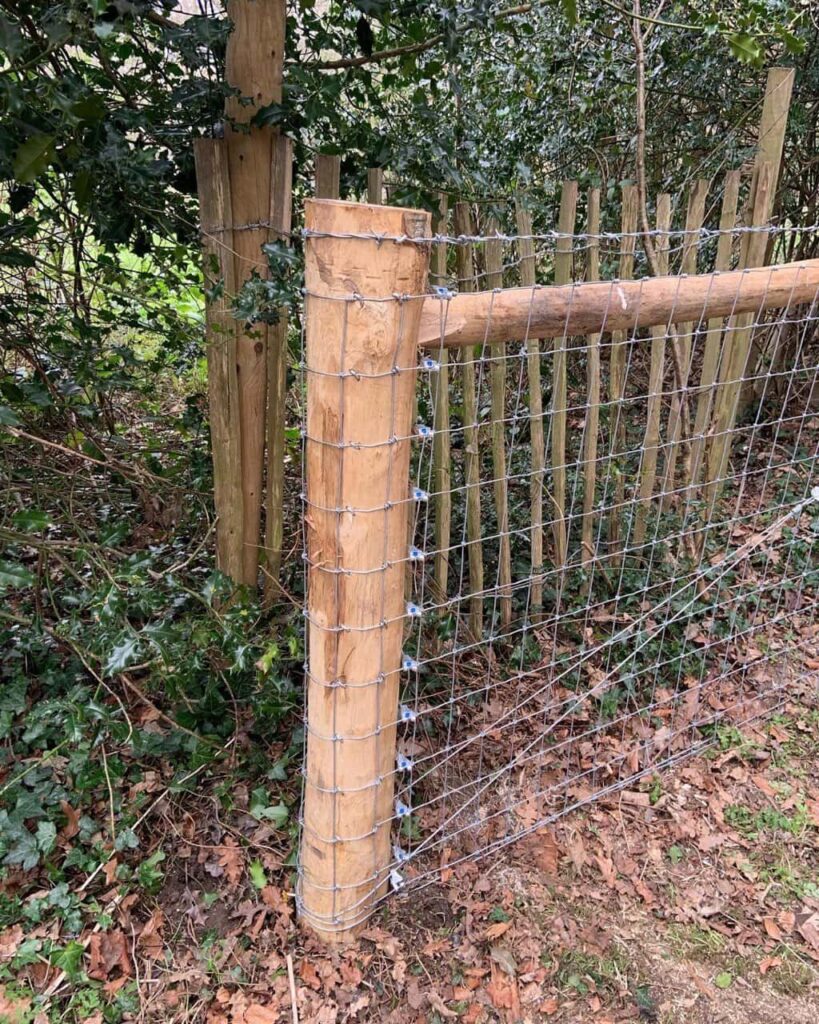How to Evaluate Old Stock Fencing for Replacement vs Repair – and Why the Decision Matters
For landowners, farmers, and rural property managers, fencing is far more than a boundary marker — it’s a critical feature that ensures livestock safety, property security, and long-term efficiency. Over time, however, even the most robust stock fencing begins to show signs of wear. Knowing when to repair and when to replace can save you time, money, and future problems. Fast Fix Fencing Bury St Edmunds explains how to evaluate your old stock fencing and make the right decision for your property in Bury St Edmunds and across Suffolk.
Understanding the Purpose of Stock Fencing
Stock fencing is designed to create a secure perimeter for animals, prevent trespassing, and maintain land boundaries. Whether it’s sheep netting, wire mesh, or timber post-and-rail fencing, the structure must remain strong and dependable.
When stock fencing weakens, it compromises not only the safety of livestock but also the productivity of your land. That’s why regular inspections are essential — they help identify early signs of deterioration before small issues develop into major failures.
Step One: Conduct a Thorough Fence Inspection
The first step in deciding between repair and replacement is a detailed inspection. A walk along the entire fence line will help you assess the overall condition. Look for the following common signs of wear:
- Rust or corrosion on wire and fixings
- Loose or leaning posts due to ground movement or rot
- Broken or sagging wires that reduce tension
- Missing or damaged rails or mesh sections
- Weak joins or loose staples that compromise integrity
- Soil erosion undermining fence posts
A thorough assessment provides a clear picture of whether the fence is structurally sound or approaching the end of its lifespan.
When Repairs May Be Enough
If damage is localised and the majority of the structure remains solid, a professional repair can often restore functionality. Repairs are most effective when:
- Only a few posts are loose or decayed.
- A limited number of wires have snapped or lost tension.
- Rust is confined to certain fixings rather than widespread.
- The overall alignment and tension of the fence are intact.
A skilled fencing specialist such as Fast Fix Fencing Bury St Edmunds can replace individual components, retighten wires, and reinforce weak points without the need for a full rebuild.
Regular maintenance, including re-tensioning wires and replacing damaged posts, can also extend the life of your existing fencing.
When Replacement Becomes the Best Option
There are times when continual repairs become less practical or effective. If multiple sections of the fence have deteriorated or structural issues are widespread, a full replacement is the wiser choice.
Replacement is often necessary when:
- Rot has affected a high number of wooden posts.
- Metal components show significant rusting and pitting.
- Fencing no longer maintains proper height or tension.
- Animals have repeatedly escaped or damaged the fencing.
- Sections have collapsed due to soil movement or weather damage.
In these situations, a new installation will provide greater stability, improved performance, and a longer service life.
Why the Decision Matters
Choosing between repair and replacement isn’t just about appearance — it has practical and economic consequences that affect your property for years to come.
1. Animal Safety and Containment
A weakened fence can allow livestock to escape, injure themselves, or stray into neighbouring properties. Reliable fencing protects animals and reduces the risk of accidents.
2. Long-Term Efficiency
While repairs can be cost-effective in the short term, they may not always solve underlying structural problems. Replacing the entire fence can provide a fresh start with stronger materials and improved design, reducing the need for frequent maintenance.
3. Property Value and Presentation
Well-maintained fencing contributes to the overall appearance and value of your land. Dilapidated or mismatched repairs can detract from its professional appearance, whereas a uniform replacement enhances kerb appeal and gives confidence in the property’s upkeep.
4. Environmental and Soil Considerations
In rural areas like Bury St Edmunds, soil conditions can shift due to weather patterns, moisture, or livestock pressure. These changes can undermine old posts and strain wire tension. A full replacement allows for reinstallation with appropriate foundations and materials suited to the terrain.
5. Compliance with Modern Standards
Over the years, fencing materials and techniques have evolved. Newer designs often offer better strength, corrosion resistance, and durability. Replacing outdated fencing ensures your property benefits from the latest performance and safety standards.
Assessing the Age and Material of Your Fence
The type and age of your fencing play a major role in determining its longevity.
- Timber posts and rails can last between 10 and 20 years, depending on treatment and exposure to moisture.
- Galvanised wire fencing can last even longer but may corrode over time, especially in damp or coastal areas.
- Electric fencing may require more frequent checks, as wiring, insulators, and connections can degrade.
If your stock fencing has been in place for decades without significant maintenance, it’s likely nearing the end of its lifespan.
Professional Evaluation: Why It’s Worthwhile
Even with a visual inspection, the true condition of your fence may not be obvious. Structural issues such as internal post rot or underground movement can go unnoticed until failure occurs.
A professional assessment by Fast Fix Fencing Bury St Edmunds can identify these hidden weaknesses and provide an informed recommendation based on the full condition of your fencing system. Their experienced team understands the demands of agricultural and rural environments and can suggest the most reliable solution for long-term durability.
Benefits of Modern Replacement Fencing
If a full replacement is necessary, modern stock fencing options provide several key benefits:
- Improved strength and tension retention for longer performance.
- Galvanised or coated materials for enhanced rust resistance.
- Better animal containment with smooth, safe designs.
- Faster installation times using advanced techniques and tools.
- Reduced maintenance requirements, saving time in the long run.
Upgrading your fencing can also give you peace of mind knowing that your property boundaries and livestock are protected for years to come.
How to Extend the Life of Your New or Repaired Fence
Once your fence is repaired or replaced, ongoing care is key to maintaining its integrity. A few simple maintenance practices include:
- Regularly walk the perimeter to spot early signs of wear.
- Clear vegetation that could trap moisture against the fence.
- Retighten wires or check posts after severe weather.
- Treat timber posts periodically to resist rot.
These small actions can prevent major problems from developing and ensure your fence remains strong and secure.
Conclusion
Stock fencing is one of the most important investments for any rural property, and knowing when to repair or replace can make all the difference. A careful inspection can reveal whether your existing fence still has life left or if it’s time for a complete upgrade.
For property owners in Bury St Edmunds and across Suffolk, Fast Fix Fencing Bury St Edmunds provides expert guidance and professional fencing solutions tailored to your land and livestock needs. With the right decision and skilled installation, your fencing will remain dependable, safe, and built to last for years to come.
Call us on: 01284 339 596
Click here to find out more about Fast Fix Fencing Bury St Edmunds
Click here to complete our contact form and see how we can help with your fencing needs.

